 Slow moving "silent" earthquakes that last on the order of weeks to months could be useful for predicting when more destructive temblors will strike, scientists said today.In the July 6 issue of the journal Nature, a team of American geoscientists urge colleagues to search for evidence of the silent movements in earthquake-prone regions of the world, such as the Pacific Northwest.The silent quakes could trigger swarms of small magnitude earthquakes that could in turn set the stage for a more catastrophic event, the researchers say.
Slow moving "silent" earthquakes that last on the order of weeks to months could be useful for predicting when more destructive temblors will strike, scientists said today.In the July 6 issue of the journal Nature, a team of American geoscientists urge colleagues to search for evidence of the silent movements in earthquake-prone regions of the world, such as the Pacific Northwest.The silent quakes could trigger swarms of small magnitude earthquakes that could in turn set the stage for a more catastrophic event, the researchers say.A silent quake
Predicting earthquakes has proven notoriously difficult. In the new study, the scientists describe four silent, or "aseismic," earthquakes detected around Kilauea volcano on Hawaii's Big Island between 1998 and 2005.What made the Kilauea event special was that it was accompanied by about 60 conventional earthquakes of magnitudes 2 and 3 spread out over two days. That's about six times higher than the area's background rate of earthquake activity.
Data from global positioning satellites revealed that the micro-tremors were preceded by a silent, magnitude 5.7 quake that lasted for 48 hours.The researchers think the silent tremor triggered the swarm of minor quakes. The minor quakes in turn might be adding stress to the fault zone, increasing the chances of a mega-earthquake of magnitude-8 or larger occurring.
No ground shaking
The earthquakes we feel are sudden, ground-shaking events that are relatively short-lived. Silent temblors are different; they typically occur over several weeks or months and are not considered hazardous.It's been speculated, however, that the silent quakes could hint at when more destructive events might occur in so-called subduction zones, areas where one tectonic plate is being subducted, or sliding under, another. Silent earthquakes have recently been discovered in subduction zones in the Pacific Northwest, Japan, Mexico and elsewhere."It is likely that as these silent slow-slip events occur, the probability of a bigger seismic quake goes up," said study leader Paul Segall, a geophysicist at Stanford University in California.The Hawaiian Islands where the researchers detected the silent temblor sits atop a magma-spewing region of the Earth's mantle that is a hotbed for earthquake activity. But the researchers think a similar pattern—an aseismic event followed by micro-earthquakes—can be found along subduction zones as well.
The earthquakes we feel are sudden, ground-shaking events that are relatively short-lived. Silent temblors are different; they typically occur over several weeks or months and are not considered hazardous.It's been speculated, however, that the silent quakes could hint at when more destructive events might occur in so-called subduction zones, areas where one tectonic plate is being subducted, or sliding under, another. Silent earthquakes have recently been discovered in subduction zones in the Pacific Northwest, Japan, Mexico and elsewhere."It is likely that as these silent slow-slip events occur, the probability of a bigger seismic quake goes up," said study leader Paul Segall, a geophysicist at Stanford University in California.The Hawaiian Islands where the researchers detected the silent temblor sits atop a magma-spewing region of the Earth's mantle that is a hotbed for earthquake activity. But the researchers think a similar pattern—an aseismic event followed by micro-earthquakes—can be found along subduction zones as well.
Sign of things to come
If so, scientists could use the slow events to gauge how much stress is occurring at the regions where two plates meet in subduction zones.In the Pacific Northwest, for example, scientists have discovered that silent quakes occur every 14 months or so like clockwork. If seismologists could pinpoint the source of the silent quakes, they might be able to predict when a big earthquake is likely to hit."It's possible that each time a slow event occurs, and as we get later and later in the cycle, or closer and closer to the really big one, these slow events should start to get bigger, because the area that's getting closer to failure will have grown larger," Segall explained."And as we get closer to the big event, what starts out as a M1 today could start growing into M2s, M3s, M4s and so on."
If so, scientists could use the slow events to gauge how much stress is occurring at the regions where two plates meet in subduction zones.In the Pacific Northwest, for example, scientists have discovered that silent quakes occur every 14 months or so like clockwork. If seismologists could pinpoint the source of the silent quakes, they might be able to predict when a big earthquake is likely to hit."It's possible that each time a slow event occurs, and as we get later and later in the cycle, or closer and closer to the really big one, these slow events should start to get bigger, because the area that's getting closer to failure will have grown larger," Segall explained."And as we get closer to the big event, what starts out as a M1 today could start growing into M2s, M3s, M4s and so on."
As in the days of Noah...

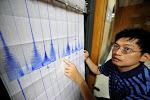
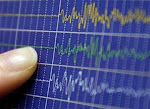
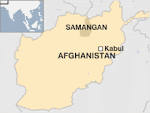






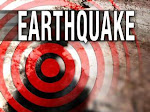
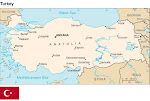
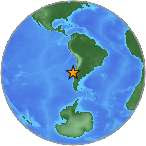




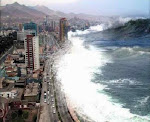

.jpg)


.bmp)
No comments:
Post a Comment